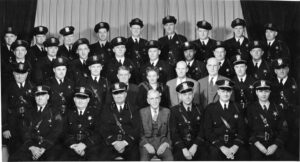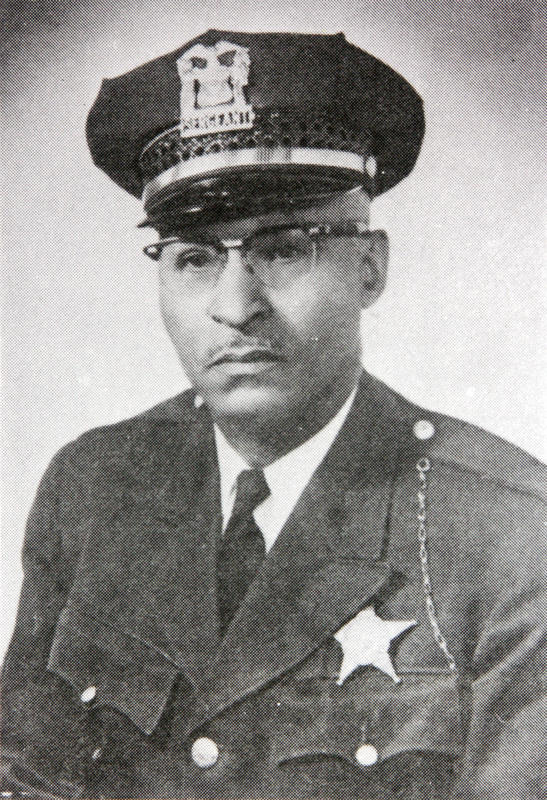Sergeant Allen A. Rivers, Sr.
Allen A. Rivers, Sr. was hired as the first and, at the time, only African American in the Champaign Police Department on August 1, 1935. He worked for 33 years as a policeman rising from a “beat cop” to a motorcycle cop, and then to Sergeant before retiring. He was known as never having to fire his gun in pursuit of a criminal or during an arrest.
 He was a member of the Elks, the ONO, the Urban League, the NAACP. He was a 33 1/3 Degree Mason and served as Worshipful Grand Master of the Long Star Lodge of the Prince Hall. He served as an honorary board member of the Champaign Park District and served as trustee for Bethel AME Church. Born on December 7, 1902, in Alexander County in southern Illinois, he came to Champaign in 1919 at the age of 17 and lived with his two aunts, sisters Callie and Pearl Marshall, who were hairdressers. In 1923, he married Clyda Mae Simpson, whose family had migrated from Kentucky. They had five children. After the death of Clyda Mae, he married Ellen Treadwell in 1952. Two of his sons went into law enforcement: Allen A, Rivers, Jr., a Military Policeman during the Korean War who later joined the University of Illinois Police Department; and Richard Rivers who like his brother became a Military Policeman. Richard was assigned special duty assignments until retiring. Allen Rivers died on November 12, 1989. A funeral was held at Bethel AME Church, and he was buried in Mount Hope Cemetery.
He was a member of the Elks, the ONO, the Urban League, the NAACP. He was a 33 1/3 Degree Mason and served as Worshipful Grand Master of the Long Star Lodge of the Prince Hall. He served as an honorary board member of the Champaign Park District and served as trustee for Bethel AME Church. Born on December 7, 1902, in Alexander County in southern Illinois, he came to Champaign in 1919 at the age of 17 and lived with his two aunts, sisters Callie and Pearl Marshall, who were hairdressers. In 1923, he married Clyda Mae Simpson, whose family had migrated from Kentucky. They had five children. After the death of Clyda Mae, he married Ellen Treadwell in 1952. Two of his sons went into law enforcement: Allen A, Rivers, Jr., a Military Policeman during the Korean War who later joined the University of Illinois Police Department; and Richard Rivers who like his brother became a Military Policeman. Richard was assigned special duty assignments until retiring. Allen Rivers died on November 12, 1989. A funeral was held at Bethel AME Church, and he was buried in Mount Hope Cemetery.
The Champaign Police Department did not hire a second African American policeman until around 1950, when it hired Franklin Sayles.
Decade:
1930-1939
People:
- Allen A. Rivers
Location(s):
- Champaign, Illinois
Additional Champaign Trail Sites

